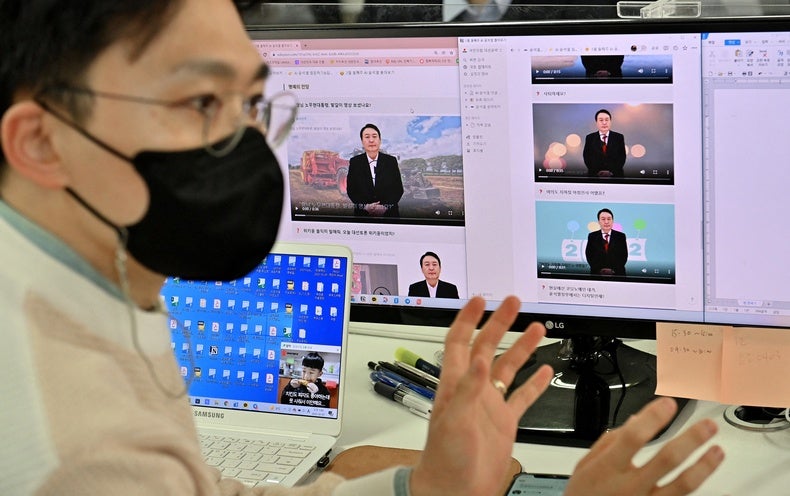Human beings Locate AI-Produced Faces Much more Honest Than the Real Matter

When TikTok video clips emerged in 2021 that appeared to present “Tom Cruise” creating a coin vanish and enjoying a lollipop, the account title was the only clear clue that this was not the actual offer. The creator of the “deeptomcruise” account on the social media platform was employing “deepfake” know-how to display a device-generated version of the well known actor executing magic tips and obtaining a solo dance-off.
Just one tell for a deepfake applied to be the “uncanny valley” result, an unsettling feeling activated by the hollow appear in a artificial person’s eyes. But progressively convincing pictures are pulling viewers out of the valley and into the globe of deception promulgated by deepfakes.
The startling realism has implications for malevolent makes use of of the technology: its prospective weaponization in disinformation strategies for political or other acquire, the creation of untrue porn for blackmail, and any variety of intricate manipulations for novel forms of abuse and fraud. Acquiring countermeasures to detect deepfakes has turned into an “arms race” between security sleuths on a person side and cybercriminals and cyberwarfare operatives on the other.
A new review printed in the Proceedings of the Nationwide Academy of Sciences Usa gives a measure of how significantly the know-how has progressed. The outcomes advise that genuine human beings can effortlessly fall for device-created faces—and even interpret them as much more trusted than the real short article. “We located that not only are synthetic faces remarkably reasonable, they are deemed much more honest than true faces,” states analyze co-creator Hany Farid, a professor at the University of California, Berkeley. The result raises fears that “these faces could be really helpful when used for nefarious needs.”
“We have in fact entered the entire world of perilous deepfakes,” says Piotr Didyk, an associate professor at the College of Italian Switzerland in Lugano, who was not involved in the paper. The instruments used to produce the study’s nonetheless photographs are already usually available. And although creating equally innovative video is extra complicated, equipment for it will probably soon be in just basic reach, Didyk contends.
The synthetic faces for this review ended up created in back again-and-forth interactions between two neural networks, illustrations of a style recognized as generative adversarial networks. One of the networks, called a generator, produced an evolving series of artificial faces like a university student functioning progressively by way of rough drafts. The other network, recognised as a discriminator, educated on true photographs and then graded the created output by comparing it with facts on real faces.
The generator began the training with random pixels. With comments from the discriminator, it progressively manufactured significantly realistic humanlike faces. Eventually, the discriminator was unable to distinguish a serious encounter from a fake one.
The networks trained on an array of real photographs representing Black, East Asian, South Asian and white faces of both equally adult males and gals, in contrast with the extra common use of white men’s faces in earlier investigate.
Soon after compiling 400 genuine faces matched to 400 artificial versions, the researchers asked 315 individuals to distinguish genuine from phony among a range of 128 of the images. An additional group of 219 individuals obtained some coaching and comments about how to place fakes as they tried using to distinguish the faces. Ultimately, a 3rd team of 223 individuals each and every rated a choice of 128 of the photographs for trustworthiness on a scale of a single (really untrustworthy) to 7 (pretty dependable).
The initially team did not do much better than a coin toss at telling true faces from fake ones, with an regular precision of 48.2 p.c. The next group unsuccessful to exhibit spectacular improvement, acquiring only about 59 per cent, even with suggestions about those participants’ options. The group ranking trustworthiness gave the synthetic faces a slightly higher ordinary ranking of 4.82, in contrast with 4.48 for genuine people today.
The researchers were being not anticipating these final results. “We at first thought that the artificial faces would be a lot less dependable than the true faces,” states study co-creator Sophie Nightingale.
The uncanny valley idea is not fully retired. Study individuals did overwhelmingly determine some of the fakes as pretend. “We’re not indicating that each single picture created is indistinguishable from a authentic confront, but a substantial number of them are,” Nightingale suggests.
The acquiring adds to concerns about the accessibility of technological innovation that will make it achievable for just about any one to produce misleading still photographs. “Anyone can create synthetic content without specialised knowledge of Photoshop or CGI,” Nightingale states. Another concern is that these types of results will generate the perception that deepfakes will grow to be entirely undetectable, suggests Wael Abd-Almageed, founding director of the Visible Intelligence and Multimedia Analytics Laboratory at the University of Southern California, who was not involved in the analyze. He worries scientists may well give up on seeking to acquire countermeasures to deepfakes, though he views retaining their detection on rate with their increasing realism as “simply however an additional forensics problem.”
“The dialogue that is not occurring more than enough in this research neighborhood is how to start off proactively to increase these detection equipment,” suggests Sam Gregory, director of systems technique and innovation at WITNESS, a human rights business that in aspect focuses on approaches to distinguish deepfakes. Creating equipment for detection is essential due to the fact men and women are likely to overestimate their potential to spot fakes, he suggests, and “the public normally has to fully grasp when they’re being used maliciously.”
Gregory, who was not associated in the study, factors out that its authors immediately address these issues. They emphasize 3 possible methods, which includes building tough watermarks for these produced images, “like embedding fingerprints so you can see that it arrived from a generative method,” he states.
The authors of the examine conclude with a stark summary after emphasizing that deceptive works by using of deepfakes will go on to pose a threat: “We, therefore, inspire these building these systems to contemplate no matter whether the related risks are bigger than their added benefits,” they produce. “If so, then we discourage the improvement of know-how merely because it is possible.”







